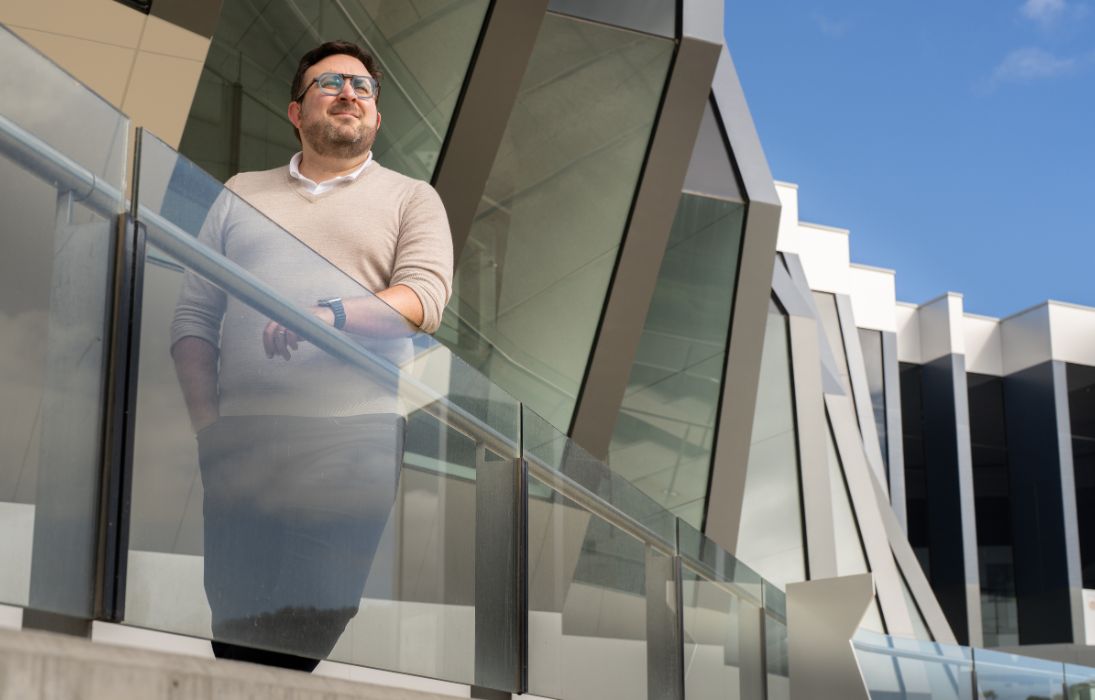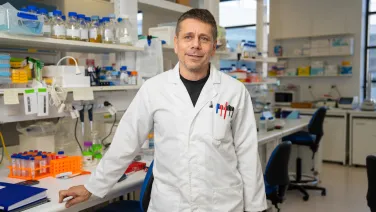A promising new cancer treatment for people living with Kaposi sarcoma in Africa

When research showed that a low-cost immune therapy could treat one of the deadliest cancers in sub-Saharan Africa, the next step seemed obvious: get it to the people who need it most.
But the reality is far more complex.
“About 75 per cent of global Kaposi sarcoma cases occur in sub-Saharan Africa, where it is both a common and deadly cancer,” says Professor Mark Polizzotto from The Australian National University (ANU) and ACT Health.
He is part of a global team working to help bridge the gap in cancer care between high- and low-income countries.
“We have shown that a cheaper immune therapy drug can be an effective treatment for Kaposi sarcoma, even in advanced cases.”
Caused by a type of herpesvirus, this cancer disproportionately affects people with HIV.
Thanks to earlier work by the team, an effective immune therapy drug called pomalidomide has been approved as a treatment for Kaposi sarcoma in some markets. However, those living in areas hardest hit still do not have access.
“Our work on pomalidomide led to accelerated approval in the US, allowing people in high-income countries to access the therapy,” explains Professor Polizzotto, who leads the ANU Clinical Hub for Interventional Research (CHOIR) at The John Curtin School of Medical Research.
“However, there are no trials currently underway in sub-Saharan Africa where the disease burden is the greatest.”
That is set to change. Nearly $5 million in funding from Australia’s National Health and Medical Research Council will support a new clinical trial in Botswana, Uganda and Zimbabwe.
This trial, developed in partnership with local communities, clinicians and researchers, will compare immune therapy with traditional chemotherapy in real-world settings.
“In resource-limited settings, it is very important to know if health interventions are cost-effective and if people will benefit from drug innovations,” says Associate Professor Nhung Nghiem, who is leading the economic evaluation of the treatment within the CHOIR group at ANU.
Kaposi sarcoma can cause lesions on the skin, lymph nodes and some internal organs. In sub-Saharan Africa, where both HIV and the virus that causes the cancer are widespread, outcomes are often devastating.
“Up to half of the people with Kaposi sarcoma in sub-Saharan Africa die within a year,” says Professor Polizzotto. “Many survivors live with long-term disability.”

Standard treatment is not easy to deliver. The chemotherapy drug currently used is costly, needs cold storage and must be given intravenously. For people living with HIV, it can be especially problematic.
“Impairment of the immune system is a key reason why people with HIV are more susceptible to some cancers, however, the most common cancer treatments can further damage the immune system,” Professor Polizzotto explains.
“We hope that our new approach will address the underlying drivers of cancer while preserving and enhancing the immune response.”
The trial will include 420 participants, both HIV-positive and HIV-negative, across Botswana, Uganda, and Zimbabwe. People with HIV will also receive antiretroviral therapy. The goal is to see how well the immune therapy performs compared to chemotherapy.
“These therapies have transformed care of many cancers in wealthy countries, and we believe our approach to simplified immune therapies has huge potential to bridge the gap in Africa,” he says. “Providing that the therapies are effective, safe, and can be delivered within the existing health, economy and human infrastructure.”
The team’s work is informed by more than a decade of collaboration with local communities, including people with lived experience of HIV and cancer. The clinical trials are designed not just around the science, but also around the realities on the ground, including stigma to access to care.

Associate Professor Nghiem’s work will assess whether the treatment is affordable and effective in different economic settings.
“We will compare the cost-effectiveness of immune therapy with existing treatment,” she says. “We want to see whether it improves both life expectancy and quality of life.
“Each country also has a different economic situation and disease burdens, among other factors, that will go into determining whether the drugs are cost-effective or not.”
The project reflects the mission for the ANU Clinical Hub for Interventional Research (CHOIR), which is to connect the latest science with real-world solutions.
“At CHOIR I can support early-stage health economics input into clinical trial design and evaluation to enhance quality, feasibility, and impact,” says Associate Professor Nghiem.
CHOIR’s work focuses on ensuring that effective treatments reach the people who need them, which hinges on bringing people and communities together.
“We want to develop simple, effective cancer treatments that can be used by those who need them most,” adds Professor Polizzotto.
“We have seen with HIV that bringing together community advocacy, scientific advances, and a health economic understanding can yield huge advances in the health of individuals and their societies.”
The researchers hope that this clinical trial will become a model for global collaboration, combining medical science, community partnerships and health economics to tackle pressing challenges. If successful, it could lead to more accessible treatment for people.
“Our goal is that this will be the first of several trials of immune therapies for cancers common in Africa.”



